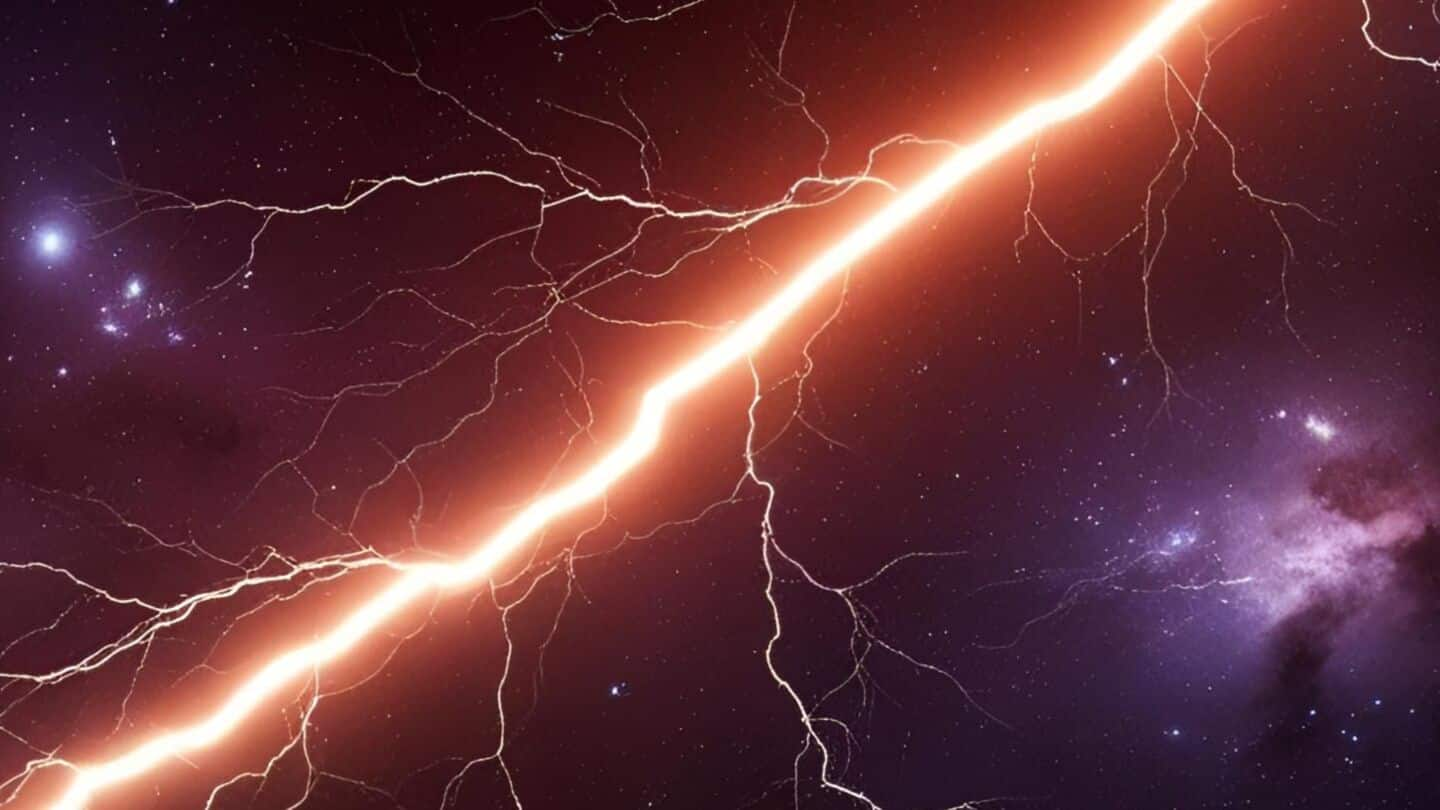Biggest structure in the universe is larger than we thought
What's the story
Astronomers have made a groundbreaking discovery about the Hercules-Corona Borealis Great Wall, the largest known structure in the universe.
Using gamma-ray bursts (GRBs), they found that this cosmic supercluster is even larger than previously thought.
Also, some parts of it are closer to Earth than earlier estimates suggested.
The term "supercluster" refers to a massive collection of galaxies bound by gravity and other cosmic forces.
Structure
A cosmic supercluster
The Hercules-Corona Borealis Great Wall is a filament of the cosmic web, where the universe's first galaxies came together and evolved.
Its name was given by Johndric Valdez, a Filipino teenager who aspires to be an astronomer.
The structure goes beyond the constellations Hercules and Corona Borealis, spanning from Bootes to Gemini.
Discovery
A closer look at the structure
The Hercules-Corona Borealis Great Wall was first discovered in 2014 by scientists Istvan Horvath, Jon Hakkila, and Zsolt Bagoly. Their latest study has offered a more precise measurement of the structure.
They discovered that it covers an even wider radial range than previously calculated and even incorporates some nearby gamma-ray bursts as part of this gigantic structure.
Measurement
Size and scale of the Great Wall
Hercules-Corona Borealis Great Wall is already 10 billion light-years long, 7.2 billion light-years wide, and nearly a billion light-years thick.
That's enough room for over 94,000 Milky Way galaxies to fit side by side along its longest side, which extends for about 10% of the total width of the entire observable universe.
GRBs
Gamma-ray bursts: The key to understanding the Great Wall
Gamma-ray bursts are the brightest, most powerful explosions in the universe.
They played a key role in the discovery of the Hercules-Corona Borealis Great Wall in 2014, and its recent, more detailed study.
These bursts can be classified into two categories based on their duration and origin.
They are long-duration GRBs, which stem from massive star core collapses resulting in supernova explosions, and short-duration GRBs, coming from neutron star collisions in double-star systems.
Cosmic markers
GRBs as markers for galaxy locations
Gamma-ray bursts are not only explosions but also markers of where galaxies are located.
Since they are so bright, GRBs can indicate the presence of a galaxy even when the galaxy itself is too faint to be observed.
"The tremendous brightness of gamma-ray bursts allows them to be markers of where matter can be found in the universe," said Hakkila from the University of Alabama.
Cosmology
The Great Wall challenges the cosmological principle
The Hercules-Corona Borealis wall, a massive structure of galaxies located some 10 billion light-years away, defies the cosmological principle.
According to this principle, the universe is homogeneous and isotropic on large scales.
However, Hakkila and his colleagues found that clustering of gamma-ray bursts is more pronounced in the northern galactic sky than in the southern one.
Next steps
Future research and the role of THESEUS
Hakkila's team intends to keep studying the properties of GRBs in their sample used for this research. They think a more detailed examination is required to fully understand these cosmic structures.
New missions such as THESEUS, a proposed European Space Agency (ESA) mission designed to revolutionize GRB studies, will be key to overcoming current limitations and mapping the Hercules-Corona Borealis Great Wall in its full extent.
